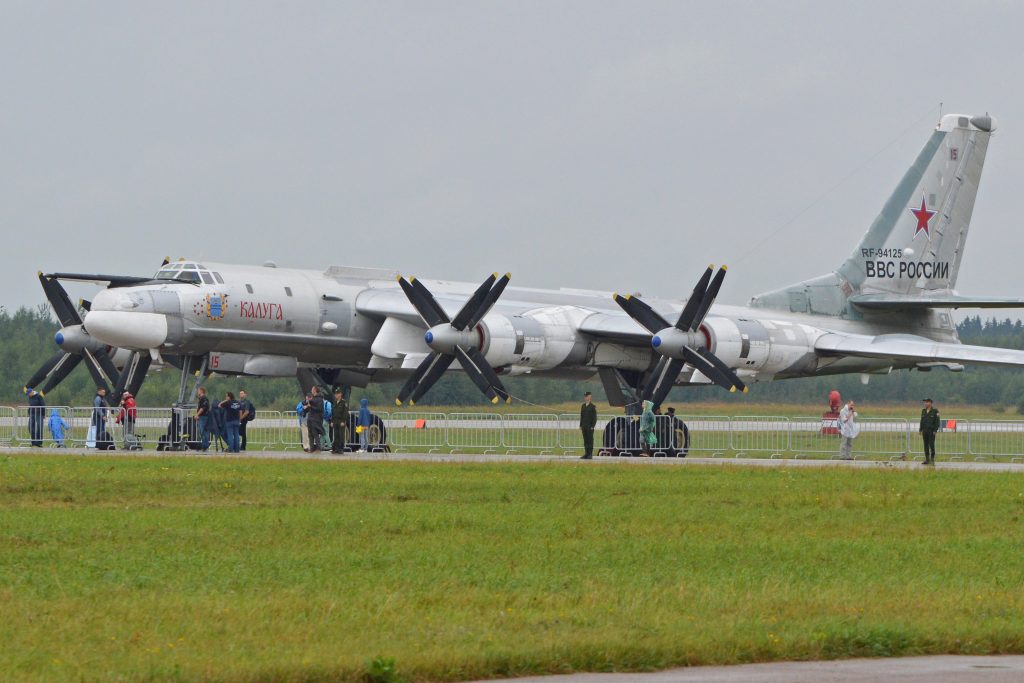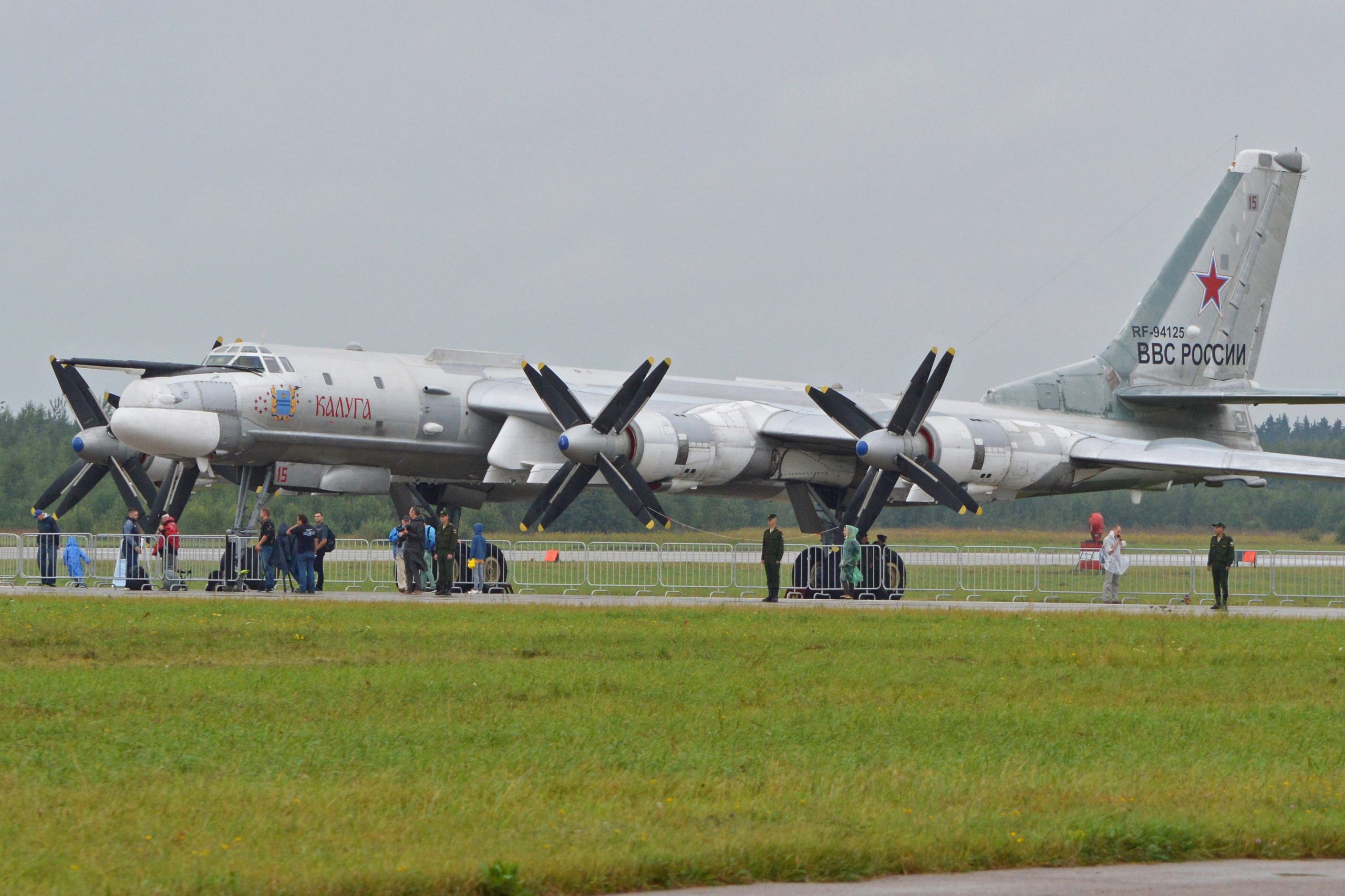
There seems to be an undercurrent of unease radiating from Russia, due to perceived threats to a key military asset – the Engels-2 airbase. Satellite images captured on the first day of September present a sight that, while not necessarily striking, is certainly unsettling.
A Tu-95 strategic bomber, stationed at the base, is protected in an unusual manner by car tires. These tires are tactically placed along the entire span of both wings and a minor portion of the upper body of the aircraft. This unique setup is designed to serve a specific function – to act as a deterrent against potential drone strikes.
A picture was shared through a Telegram account. The user of this digital messaging service, with a touch of sarcasm, provided an astute observation on the picture, remarking, “The inventiveness of the Russians is limitless, apparently creating everything except a shelter for their bombers”.
The function and efficacy of tires The decision by Russia to position car tires on the wings of a Tu-95 bomber represents an effort to construct an improvised defense against kamikaze drone strikes. The concept is that the tires will cushion the blow from a drone, preventing it from inflicting substantial damage to the aircraft.
Tires are composed of rubber, a highly flexible material. When a drone crashes into the tires, the rubber will absorb the energy from the impact and deform, lessening the force that is transmitted to the aircraft. This could help avoid damage to the wings and other vital parts of the plane.
However, it’s crucial to acknowledge that this isn’t an infallible defense against drone strikes. The effectiveness of the tires will hinge on several variables, including the size and velocity of the drone, as well as the angle and point of impact. Furthermore, there’s a risk that the tires could ignite or burst upon impact, which could endanger the aircraft and its crew.
In conclusion, while employing car tires on a bomber might appear as an unconventional defensive strategy, it demonstrates ongoing attempts to discover new and inventive methods to safeguard against emerging threats. The practical effectiveness of this strategy remains to be seen, but it’s an intriguing development in aviation security.
Rubber in military applications Rubber elements have long been incorporated into the armor of military vehicles. One instance of this is the application of rubber pads on tank tracks. These pads serve to diminish the sound and vibration generated by the tracks, thereby reducing the vehicle’s detectability by hostile forces. They also aid in preserving the tracks from wear and tear, thereby extending their service life.
Another instance of rubber usage in military vehicle armor is the application of rubber coatings on the vehicle’s exterior. These coatings can assist in absorbing the impact of projectiles, thereby lessening the damage inflicted on the vehicle. They can also provide protection against environmental factors such as extreme temperatures and severe weather conditions.
The incident on December 5, 2022 As reported by BulgarianMilitary.com on December 5 of the preceding year, an unidentified drone allegedly initiated an attack on Russia’s Engels airbase. This strategically important airbase functions as a launch site for missile strikes targeting Ukraine. Several Russian Telegram channels circulated a video purportedly showing the ensuing explosion.
In the early hours of December 5, initial reports indicated that an unidentified aircraft met a tragic end on the runway of the local airfield. The incident was marked by a sudden explosion, the reverberations of which were recorded by external surveillance equipment. This unexpected event took place after six o’clock in the morning, according to local time.
The attack resulted in damage to several bombers, although the extent of destruction was less severe than that incurred during the most recent Ukrainian offensive in Pskov. Media outlets at that time reported that at least two aircraft had been damaged. Additionally, two individuals were reported to have sustained injuries, necessitating their transfer to a nearby medical facility.
Emerging from obscurity on December 1, just four days prior to the ill-fated attack, a fresh set of satellite images highlighted the presence of Engels Air Base. This military installation, located a mere 14 kilometers (or 8.7 miles) east of Saratov, had previously remained hidden. The most notable features of these satellite images were the unmistakable shapes of Tu-95 and Tu-160 bombers, their metallic bodies reflecting sunlight.
Upon closer inspection, the image reveals at least 12 bombers stationed at the airbase. Of these, eight are Tu-95 bombers, with the remaining four being more advanced Tu-160 bombers.
Moreover, a careful examination of satellite imagery reveals an interesting detail – no fewer than five cargo aircraft are visible in close proximity. Notably, the images also reveal carts typically used for transporting cruise missiles. This compelling evidence implicitly suggests that these cargo planes may have played a role in delivering munitions intended for the bombers.
The significance of Engels-2 Engels-2, a notable Russian airbase, is primarily home to strategic bombers. The 121st Guards Heavy Bomber Aviation Sevastopol Red Banner Regiment, which operates Tu-160M bombers, is based here. Furthermore, the 184th Heavy Bomber Aviation Regiment, renowned for their expertise with the Tu-95M bombers, also has its headquarters here. Since the onset of the war, Russia has consistently used Engels-2 as a vital launch site for bombing missions into Ukraine.
Respected military analysts and seasoned experts suggest that the arrangement of the bombers on the runway indicates a considerable payload of cruise missiles and bombs. This theory is further supported by the simultaneous removal of the carts typically used for transporting cruise missiles, an event that coincided with the winter preparation of the cargo planes.
Given these observable conditions, these experts predict with some certainty that Ukraine could be subjected to a significant Russian missile attack within the forthcoming hours or possibly over the next few days.





